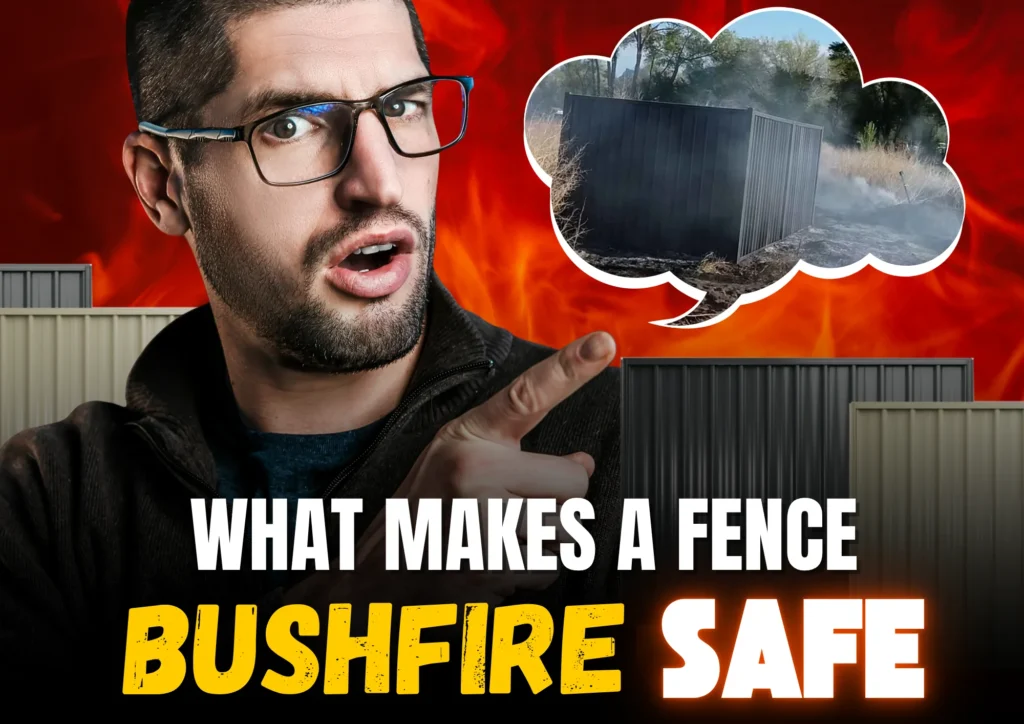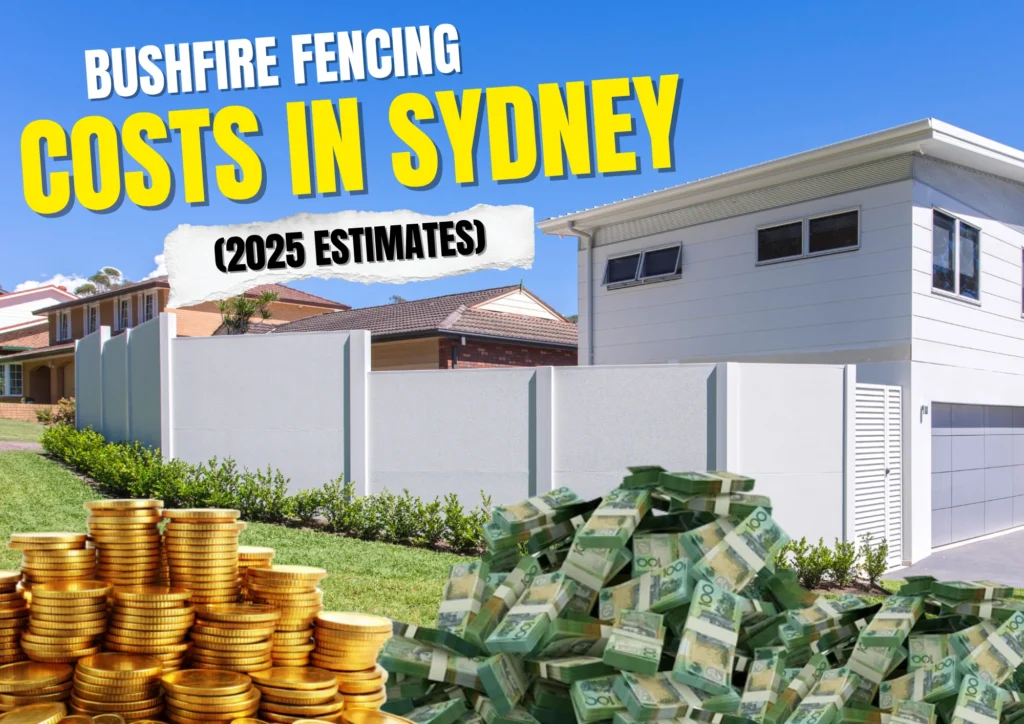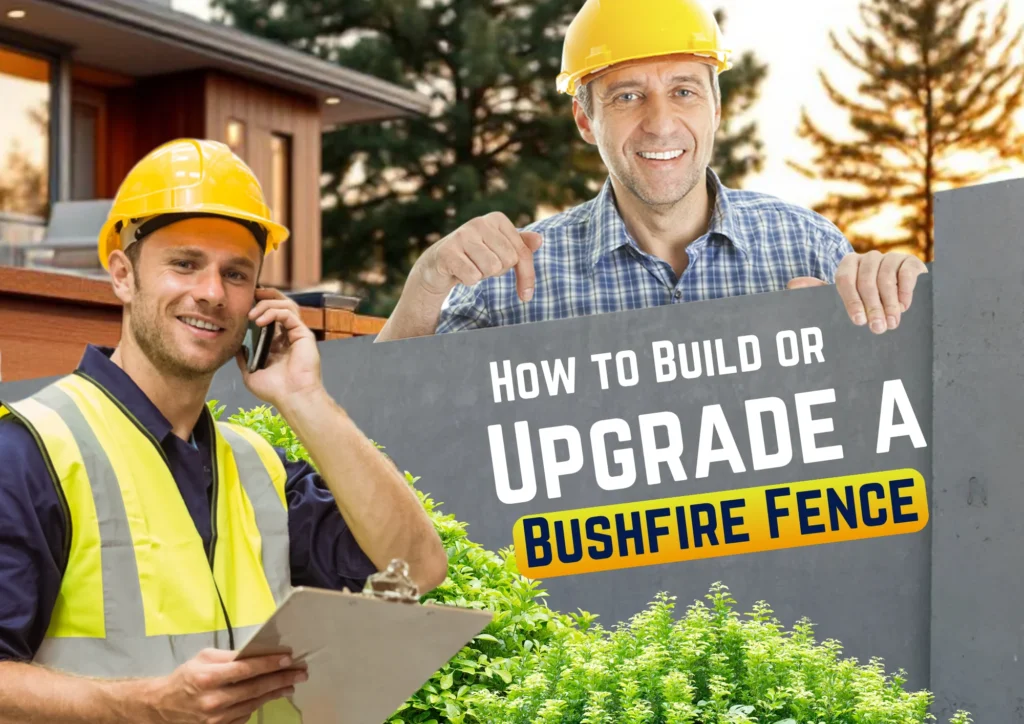The Ultimate Guide to Bushfire-Safe Fencing in Sydney
Introduction
With bushfire threats growing each year, protecting your home in Sydney’s fire-prone suburbs has become more than just a precaution—it’s a necessity. One of the most critical lines of defense is your property’s boundary: your fence. A bushfire-safe fence can reduce ember attacks, slow down fire spread, and even save your home. This comprehensive 2025 guide will walk you through everything you need to know about bushfire fencing in Sydney and wider NSW.
Table of Contents

What Makes a Fence Bushfire-Safe?
Bushfire-safe fencing is designed to resist ignition from embers, radiant heat, and direct flame contact. A fire-resistant fence doesn’t just survive fire longer—it also minimizes the risk of fire spreading into your property. Key principles include:
- Non-combustible or low-flammability materials
- No gaps greater than 10mm to prevent ember intrusion
- No attached vegetation or combustible storage
- Durable under high temperatures
Fire-Resistant Fencing Materials
Not all fences are equal. Here are the best materials for bushfire fencing in Sydney:
1. Steel Fencing
- Extremely fire-resistant and durable
- BAL (Bushfire Attack Level) compliant
- Minimal maintenance
2. Masonry (Brick or Concrete)
- Highest fire resistance
- Can double as a privacy wall
- Expensive but long-lasting
3. Metal Mesh
- Great for rural properties
- Allows wind to pass, reducing wind-driven fire spread
- Can be paired with steel or concrete posts
4. Timber (Only BAL-Low Areas)
- Should be avoided in BAL-12.5 and above
- If used, must be treated and combined with metal components
Understanding BAL Ratings (Bushfire Attack Levels)
BAL is an Australian standard (AS 3959:2018) that determines how much risk your property faces from bushfires. It ranges from BAL-Low to BAL-FZ (Flame Zone). Your fence should meet or exceed your site’s BAL level:
- BAL-12.5 to BAL-29: Use metal or masonry fences with sealed gaps
- BAL-40 to BAL-FZ: Non-combustible materials only; consider solid concrete or steel walls
You can assess your BAL rating through a bushfire consultant or using online tools provided by NSW RFS.

Bushfire Fencing Costs in Sydney (2025 Estimates)
Costs vary depending on materials, design, and property size. Here’s a general breakdown:
- Colorbond Steel Fence: $80 – $120 per metre
- Masonry/Brick Wall: $150 – $300 per metre
- Metal Mesh + Steel Posts: $100 – $180 per metre
Additional costs include:
- Removal of old fencing
- Site preparation
- Fireproof coating or finishes
Pro Tip: Some councils or NSW Government programs may offer grants or rebates for fire-safe upgrades.
NSW Bushfire Fencing Regulations
In New South Wales, fencing in bushfire-prone areas must comply with:
- NSW RFS Guidelines
- Australian Standard AS 3959:2018
- BAL rating-based construction standards
- Local council development approval (for boundary or structural changes)
Be sure to check with your local council before starting any installation.
How to Build or Upgrade a Bushfire Fence

If you’re ready to upgrade your existing fence or build a new one, follow these key steps to ensure maximum bushfire resistance:
Assess Your Property’s BAL Rating
- This determines the level of fire resistance required.
- Use a qualified BAL assessor or NSW RFS tools.
Select the Right Materials
- Choose non-combustible materials such as Colorbond steel, concrete, or masonry.
- Avoid timber unless you’re in a BAL-Low zone.
Plan Your Fence Design
- Avoid gaps larger than 10mm.
- Use metal or fireproof gates and fastenings.
- Ensure there’s a clear zone around the fence, free of vegetation.
Check Local Council Requirements
- Ensure your fence design complies with NSW fire safety and construction regulations.
- Obtain any required permits before construction begins.
Hire a Licensed Installer
- Work with professionals experienced in bushfire-safe fencing.
- Ensure they follow AS 3959 standards during installation.
Ongoing Maintenance
- Clear debris and vegetation regularly.
- Inspect for gaps or damage after each fire season.
- Reapply fire-resistant coatings as needed.
By taking these proactive steps, you significantly improve your home’s resilience against bushfires and enhance your family’s safety.
Fireproofing Tips for Your Yard
A fire-resistant fence is only part of the equation. Boost protection with these tips:
- Keep vegetation trimmed and at least 1 metre from the fence
- Remove dry leaves and debris regularly
- Use stone or gravel as mulch near the fence line
- Install ember guards on vents and roof spaces

Where to Buy or Install Bushfire Fences in Sydney
Here are some trusted suppliers and installers:
- Protector Aluminium
- ModularWalls
- Stratco Bushfire-Resistant Fencing
- Your local Bunnings for DIY kits
Always choose a licensed contractor familiar with BAL and bushfire standards.
Conclusion
Installing a bushfire-safe fence isn’t just about ticking a box—it’s a vital investment in your home’s survival. From choosing the right fire-resistant material to understanding BAL ratings and NSW regulations, every decision matters. By taking action today, you not only improve your property’s safety but also bring peace of mind during Australia’s fire seasons.
